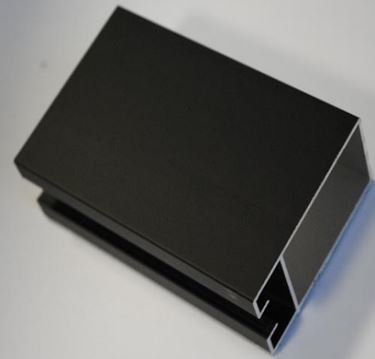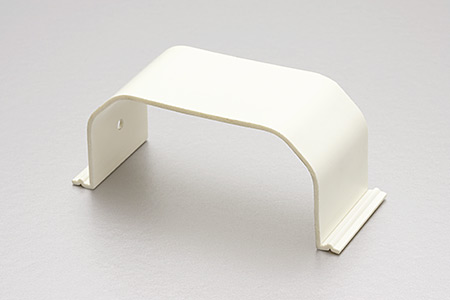Custom Extrusion: Common Types of Aluminum And Plastic Extrusion
You can take your enterprise to the next level by working with a highly skilled extrusion service.
Many industries depend on custom extrusion. Whether for manufacturing or as part of the production, there are many applications for various products created using the extrusion process.
Now, extrusion fabrication services are in higher demand than ever. These companies craft remarkable products. However, there are challenges involved in the process.
For instance, whether creating a custom extrusion aluminum product or a standard profile, trouble can arise along the way.
Fabricators base extrusion products on precise drawings. If one element is off, it can ruin the whole production run.
What Is Custom Extrusion?
Extrusion is a process of forcing raw metal or plastic through a die to create an end product. To create objects, fabricators use a die with a unique shape and profile.
Fabricators are highly skilled professionals. They use the extrusion process for creating both solid and hollow sections.
There are several types of extrusion processing. The most common are cold, hot, friction and extrusion. During hot extrusion, fabricators force metal through a die with a ram.
Cold extrusion encompasses forcing metal through a die near or at room temperature. The metals used for this process come in large slugs.
With this method, once a fabricator loads the metal billet or slug into the die feeder, they use pressure to join them together. This step creates a solid object and a new shape or end product.
Fabricators commonly use several metals in the cold extrusion process. These metals include:
- Aluminum
- Copper
- Lead
- Niobium
- Steel
- Tin
As the fabricators press the metals into shape, the raw materials can heat up to several hundred degrees. This change in temperature is called deformation heating.
Deformation heating is when a metal increases in temperature as it expands or contracts. It’s essential to understand this process. This change in temperature can change the composition of the raw material.
Additional Extrusion Methods
Friction extrusion is another well-known fabrication process. It encompasses rotating metal slugs or billets around the position of a die.
During this method, the die rotates. As it does, it generates heat from the metal on metal friction when the slug passes through the die.
The heat enables the metal to pass to the die easily. Because of this, friction extrusion is a cost-effective, efficient process that is becoming increasingly popular among fabricators.
Micro extrusion is a comparatively new extrusion process. The method involves creating micro-sized products.
Still, it’s similar to friction extrusion. However, micro extrusion is highly technical.
It’s a challenge to create miniature dies that can withstand extreme pressure. Resultantly, this method is taking time to catch on in the industry. Still, fabricators are making remarkable advancements using this method.
Fabricators create micro extrusion products with dimensions that are in the submillimeter range. The resulting deliverables, for instance, might fit through a 1 mm one square.
The most challenging part of this process is creating the die. Engineers must overcome this issue before there is much more progress in using this method.
The Benefits and Challenges of Extrusion
The extrusion manufacturing method offers several advantages. For example, fabricators can use extrusions to create a wide range of complex products.
The dies used for extrusion manufacturing are relatively easy to create and produce. Fabricators create extrusion products using a single pass.
Because it uses a single step, extrusion offers a distinct advantage over rolling metal to create a product. Also, there’s much less friction compared to using a rolling process.
The extrusion method results in clean surfaces that emerge in perfect proportion. The hallmark of the extrusion process is dimensional and geometrical accuracy.
The process is prevalent among enterprises that need to mass-produce a large amount of product in the same exacting specifications.
Still, there are disadvantages when using an extrusion process. For example, it’s not easy to change the size or the proportion of a product in the middle of a run.
Also, fabricators can only produce work with one kind of cross-section at once. Although the extrusion process itself is cost-effective, setting up and extrusion project can prove costly. Most enterprises absorb this cost with mass production.
Clients commonly order extrusion services for the production of tubes and hollow pipes. In construction, various contracting suppliers order extrusion fabricated products for multiple phases of builds. In the automotive industry, car builders may order extrusion parts for frames, doors and windows.
Metals and Custom Extrusion
During metal extrusion, fabricators use a high-speed punch. The force created by the punch drives a billet or slug through the space between the punch and the die.
Fabricators can extrude nearly any metal. However, some metals are so durable that using this method would prove cost-prohibitive.
Often, fabricators use aluminum for the extrusion process. They can work with this metal using either the hot or cold extrusion methods.
Also, extrusion service providers can further customize products by painting or anodizing them. The result is a clean, professional-looking product.
Fabricators also create extrusion products using brass. The output is an attractive golden glazed end product. Clients order brass extrusion services to create products such as handrails, gates, decorative materials and doors.
Titanium is another metal that fabricators can use for the extrusion process. Clients choose this metal when they need a product with the strength of steel.
However, titanium is lighter than steel. The metal enables fabricators to create products that are strong but lightweight.
Sometimes, fabricators receive orders for nickel products. Nickel can withstand direct impacts.
This metal is also lightweight. Clients might order nickel extrusion runs for goods such as door and window fasteners, locks, musical instruments or electronic components.
Plastics and Custom Extrusion
Plastic is another raw material frequently used during extrusion runs. Fabricators can create anything from small channels to wide panels.
Most plastic extrusion projects aren’t more than 18 inches in width. For instance, clients order custom extrusion plastic coating to cover conduits, chains, ropes and other products.
Some customers also order plastic tube extrusions that can range from three-quarters of an inch to 6 inches in diameter. For these projects, fabricators use either standard or custom-made dies that can range from two to six inches.
Fabricators can also use several materials or colors during the plastic extrusion process. For instance, they may use different metals to create flexible hinges called living hinges. Alternatively, they can use several different colors of plastics to create a product with a striped output.
Fabricators can also use the extrusion process to create a permanent vinyl coating over metal. This kind of extrusion process creates a permanent coat that will not crack, peel or chip.
Clients across many industries make use of the extrusion process. Along with fabricating, extrusion providers often also offer engineering and tooling services.
Choosing an Extrusion Partner
You must choose the right extrusion provider to partner with your company. A competent extrusion service will save you money and time. A local service provider can even enable you to make on-site visits to see how your project is going.
You want to look for an extrusion expert that has experience. An experienced service provider knows how to meet the needs of various enterprises. Also, if the company has a long, successful track record, they most likely accomplished this by staying on top of the latest technologies.
These are the points that you want to examine as you search for an extrusion partner. Once you’ve narrowed down your choices, contact the companies directly to see if they offer services that are a good fit for your project.
You should also ask for referrals. You’ll want to speak to previous clients directly to find out how your potential extrusion provider performed.
You’ll also want to take a look at their previous work. You’ll want to see some of the projects that they’ve completed for other clients.
Ask your potential extrusion partner about their machining capabilities. You want to make sure that they use current technology. You also want to make sure that they understand how to work with the materials needed to produce your products.
A successful extrusion run starts with prototyping. Typically, a skilled extrusion service will not begin a run until they’re 100% sure that you approve of the prototype.
The prototyping process is your chance to evaluate your potential extrusion partner. If they meet your deadlines, it’s a good sign that your intended service provider is up to the task.
Also, you’ll have an opportunity to find out if it’s easy to work with the company. Communication is the key that leads to what should eventually become a turnkey operation.
Partnering for a Successful Product Run
Enterprises have relied on the custom extrusion manufacturing of parts and components for years. The extrusion manufacturing process is a service that enterprises can trust.
Top extrusion service providers maintain a team of dedicated, professional experts. They’ll also give you a fair price for the production of your goods.
Protech Asia is a leading extrusion process manufacturer. Whether you need mass production or a small run, we can deliver your project. We can also complete projects in a wide range of varying dimensions, shapes and materials.
Reach out to a Protech expert today to learn about the many ways that we can help make your next extrusion run a phenomenal success.



Comment (1)
[…] Plastic and aluminum can go through extrusion fabrication to create customized furniture. You can learn more about custom extrusion here: https://prototechasia.com/en/custom-extrusion-common-types-of-aluminum-and-plastic-extrusion. […]